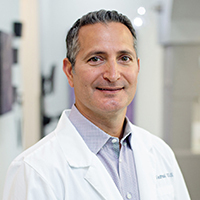What’s the Difference Between a Dentist and an Endodontist?
Image © costculator/Teeth
While all endodontists are dentists, less than three percent of dentists are endodontists. Just like a doctor in any other field, endodontists are specialists because they’ve completed an additional two or more years of training beyond dental school. Their additional training focuses on diagnosing tooth pain and performing root canal treatment and other procedures relating to the interior of the tooth. In many cases, a diseased tooth can be saved with endodontic treatment. For this reason, endodontists proudly refer to themselves as Specialists in Saving Teeth.
Endodontists Have Advanced Education
To become specialists, endodontists have two to three years of additional education in an advanced specialty program in endodontics after completing four years of dental school. They focus on studying diseases of the dental pulp and how to treat them.
Endodontists Have Specialized Expertise
By limiting their practice to endodontics, endodontists focus exclusively on treatments of the dental pulp. They complete an average of 25 root canal treatments a week, while general dentists typically do two. Endodontists don’t place fillings or clean teeth — they dedicate their time to diagnosing and treating tooth pain. They are skilled specialists in finding the cause of oral and facial pain that has been difficult to diagnosis.
Endodontists Are Experts in Pain Management
Endodontists use specialized techniques to ensure patients are thoroughly comfortable during their treatments. They are experts in administering numbing medications, especially in patients who traditionally have problems getting and staying numb. In addition to treating you comfortably, patients will be relieved of tooth pain after their treatment when the pulp infection or inflammation heals.
Endodontists Use Cutting-Edge Technologies
Endodontists have materials and equipment designed to make your treatment more comfortable and successful. They use a small sheet of latex called a dental dam to isolate the tooth during treatment, protecting the rest of your mouth. Digital radiographs and 3-D imaging allow endodontists to take detailed pictures of tiny tooth anatomy to better see the root canals and any related infections. The space inside root canals is smaller than FDR’s ear on the dime! Endodontists use dental operating microscopes to better see inside the root canals to thoroughly treat them.

